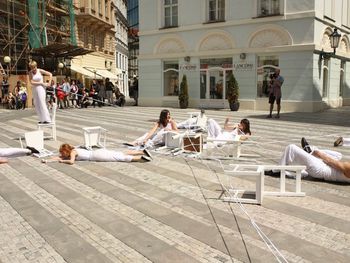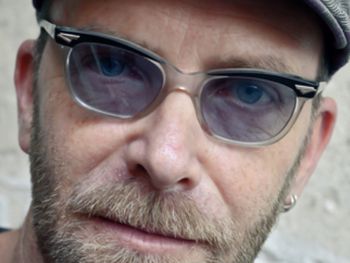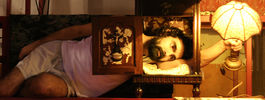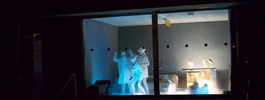
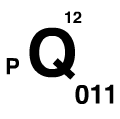
2015 » Australia » Student Section
Intimate Topographies
The Australian student exhibition is the first-time collaboration of three of Australia’s major institutions of design education: the National Institute of Dramatic Art (NIDA), the University of Technology, Sydney (UTS) and the Victorian College of the Arts (VCA). The schools negotiate a confined space in the Kafka House to present three separate but entwined inquiries.
The Victorian College of the Arts (VCA) exhibit, Ways of Seeing, encourages people to look at and consider their surroundings and maybe even themselves in a different way. Reflecting the idea that political beliefs and values affect the way that we view and understand, it begins by considering the devices that we look into, that offer a particular view, that encourage a certain frame, or that can distort and rescale: cameras, portals, proscenium arches, peepholes, windows, lenses, microscopes, mirrors. Conceptually, the students explore how these technical ideas relate to ways that political and social beliefs can affect what it is we “see”.
NIDA’s contribution, Rats in the Walls, developed by second-year students, takes a sculptural approach. The work is a scale model with a performative aspect. Based on The Rats in the Walls by H. P. Lovecraft, the students examine the problematic themes of the text through lenses of Gothic architecture, the uncanny spaces of Giovanni Battista Piranesi and Australian artist Rick Amor. Vignettes alluding to the text are encased within a kinetic sculptural shell, and designed to engage audiences over a sustained duration as they explore its semi-obscured clues, forming their own sense of its narrative. The project acknowledges the ownership of space as a recurring anxiety in contemporary Australian dialogue. Walls are used to demarcate space as a private commodity; these boundaries can become tools for controlling the flow of human traffic; walls become markers of human behaviour, defining who does and does not have control within specific spaces. Space becomes something to fight over and a reason to imprison, deport or even kill another human being.
Yallourn: The Town That Ate Itself – Students from the Interior and Spatial Design Program (ISD) at The University of Technology, Sydney (UTS) show a scale model that offers a critical reading of the events that occurred at the small town of Yallourn in the face of Australia’s continued and stubborn exploitation of non-renewable resources. At the beginning of the current decade, Australia’s economy was bolstered by its omnipresent mining sector. The trade of coal alone, from sites across the island continent to the ports of China, Japan and Korea, secured 29 billion dollars for the nation’s economy. In the century prior to this, the rise and fall of Yallourn, a small town in the Latrobe valley, charted a history within Australia’s economy and its docile reliance on unrenewable energy. Within a 60-year period, the company town Yallourn was birthed and destroyed by the collection of fossil fuels to provide economic gains and infrastructural services to the Australian population; a terrifying intersection between weather, space and politics. The history of Yallourn tells the story of an Australian town that ate itself.

